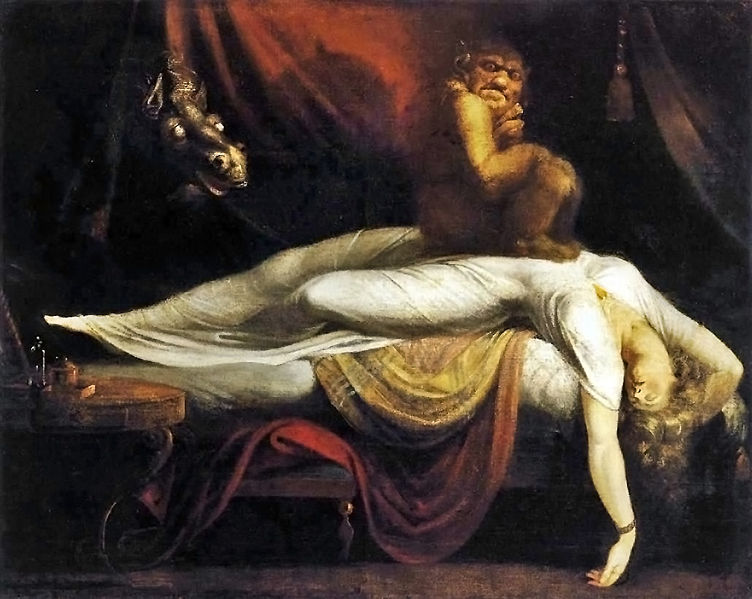As Halloween looms and things go bump in the night, this week’s appropriately ghoulish picture is The Nightmare by Henry Fuseli. First exhibited in London in 1782, it seems to have fascinated and disturbed its intended audience in roughly equal measure. William Hazlitt had it in mind when he half-jokingly stigmatised the Swiss-born émigré Fuseli as “a nightmare on the breast of British art”. But despite a mixed critical reception the picture was a great popular success and it made Fuseli’s name. For all the self-confessed imperfections of his technique (“I have courted colour,” he once wrote, “as a lover who courts a disdainful mistress”) and notwithstanding the vivid lubricity of his imagination, he rose to the position of Professor of Painting at the Royal Academy, becoming a veritable pillar of the establishment.
Fuseli was a man of contradictions. He wrote and lectured extensively on classical art. He corresponded with Jean-Jacques Rousseau, impressed William Blake and enchanted Mary Wollstonecraft, the author of A Vindication of the Rights of Women, who fell unrequitedly in love with him. In many ways he exemplified the rationalist and freethinking spirit of his times. Yet this stern and solemn upholder of the Neoclassical creed, this typical child of the Enlightenment, was also powerfully attracted to the darker sides of life.
The conflicting impulses driving the artist’s imagination are visibly at work in The Nightmare. The picture is full of borrowings from classic art. The incubus squatting on the chest of the diaphanously clad maiden resembles Roman carvings of Bacchus’s drunken companion, Silenus. The goggle-eyed nag harks back to the classical Horse Tamers on Monte Cavallo in Rome. The pose of the sleeping girl was borrowed from that of a Sleeping Psyche painted by Giulio Romano, while her heavy build and unusually muscly thighs...

ITP 28: The Nightmare, by Henry Fuseli
29-10-2000

